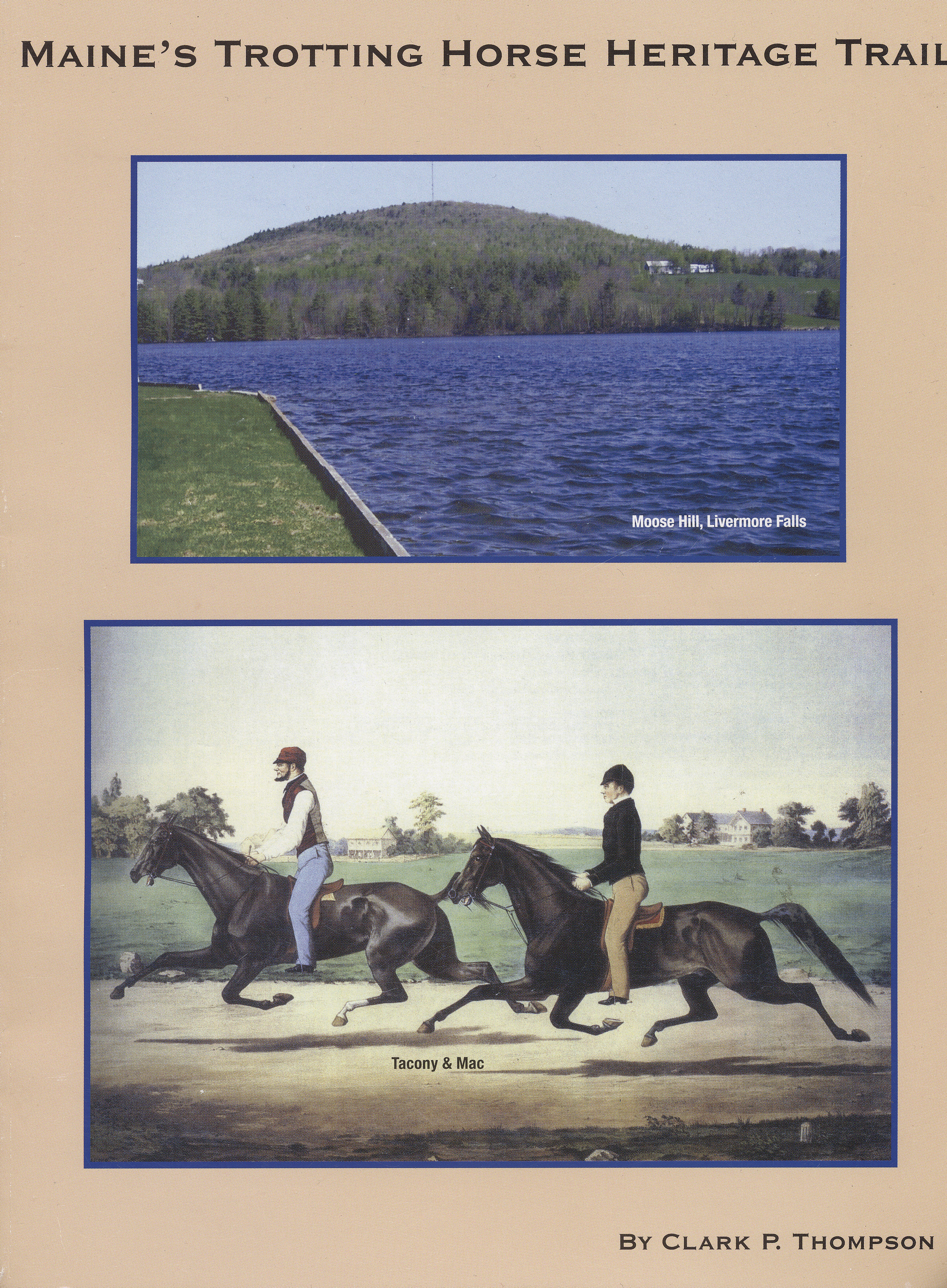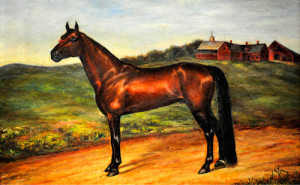
All histories of the trotting horse in America will tell you that Orange County in New York was the “cradle of the trotter”. This claim is a valid one given the fact that most trotting horses (Standardbreds) today trace their origin to “Rysdyk’s Hambletonian” who was foaled (1849) in Orange County and stood for service there from 1851 to 1876. In Maine trotting history, Kennebec County stands out for its early contributions to developing the trotting horse breed. This is documented by several sources including various articles that appeared in the Maine Farmer, a weekly agricultural newspaper, whose office was first located in Winthrop and later on Water Street in Augusta.

According to an “Illustrated History of Kennebec County Maine” published in 1892, the first efforts to improve the native horse stock of Maine occurred in 1819 when the Kennebec (Winthrop) Agricultural Society voted to offer a “liberal premium” for anyone bringing a “good stock horse” into the county. The Kennebec Agricultural Society was first organized in 1787 making it the first such society in Maine. Its name changed to “Winthrop Agricultural Society” in 1818 but reverted back to its original name by 1832. See A History of Maine Agriculture 1602 – 1860 (1954) by Clarence Day. At this time Maine farmers had little in the way of farm power other than some oxen and a lot of elbow grease according to Day. Most farms had a least one horse but a third of them had none.
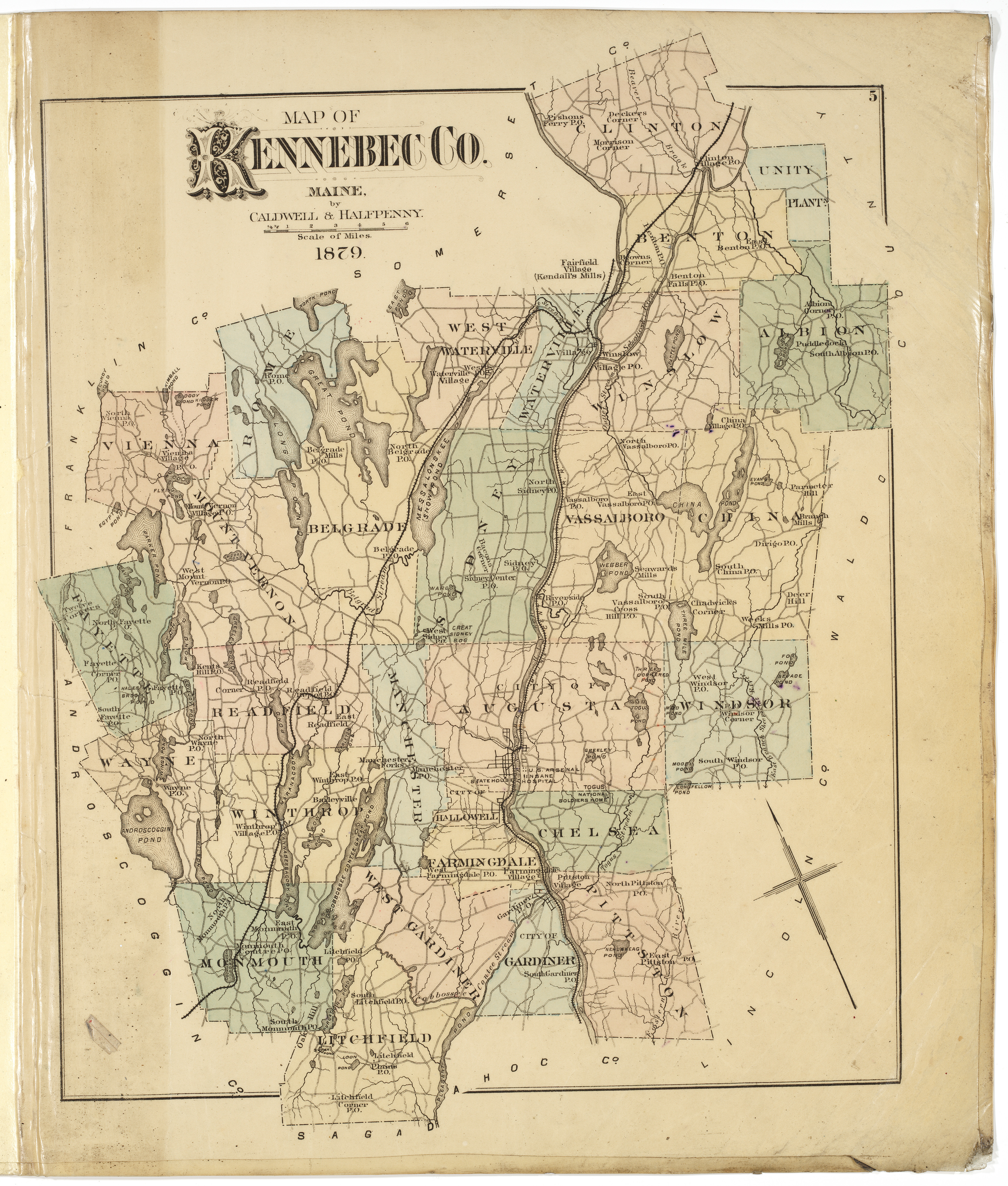
According to census figures, Maine had around 18,000 horses as compared to 48,000 oxen and 95,000 cows. The native stock was “small and hardy” and used for light farm work. Farmers were looking for a better “roadster” that could take them to town or wherever else they had to go for business or pleasure. There were no public racetracks so the only contests of speed took place on the roads between towns. One of the first persons of Kennebec County to seek out a good stock horse was Alvan Hayward of Winthrop. A History of Winthrop written in 1925 by Everett S. Stackpole noted that “he was one of the most enterprising young men of the town” who bought the village tavern, later known as the Winthrop House. According to a letter written by Hayward which appeared in the Farmer on June 10, 1852, the horse called “Kennebec Messenger” was purchased by him in Paris, Onedia County, New York and brought to Winthrop in the fall of 1819. He further stated that “there is not a shade of doubt in my m
Imported Messenger was a thoroughbred horse brought from England to New York in 1788. According to Hayward, the stock produced by his horse was “good for draft, for the carriage, for travel, parade, or for any place where horses are required.” It is likely that he stabled his stallion, at least during the breeding season, at the Hotel Livery which was located at the rear of the Winthrop House on Elm Street (now Union Street). See Sanborn map of Winthrop (1885). The Livery has changed over the years, being once used as a parking garage and now as a fitness center. It is interesting to note that the stallion Winthrop Morrill was also stabled in this same location when he died in 1882. See the “Maine Horse Breeders Monthly” (September/1882) by John W. Thompson. Hayward was not sure the date his horse was foaled, but stated “he was twelve years old, past, when I purchased him”. The editor of the Farmer, Ezekiel Holmes, who lived in Winthrop remembered the “Old Messenger” as follows: “We saw him in the last years of his life, and can say that he was a large, muscular horse, of white color, and had a clumsy head. He was a horse of great strength and endurance, and got some of the best colts for the road that we ever had … ” Kennebec Messenger, or as he later became known “Winthrop Messenger”, was kept in Kennebec and Somerset Counties and died in or near Anson in 1834. During this time he laid the foundation for the trotting horse breed of horses that eventually became known as “Standardbred. ”
As the years passed, Maine’s horse breeders sought information about the descendants of Winthrop Messenger. Because there was no central registry for names of horses and their breeding, there was much confusion among breeders as to the pedigrees of horses. One example of this was the stallion “Bush Messenger” owned by Hiram Reed of Augusta. Editor Holmes, in commenting on an advertisement for Bush Messenger placed in the Farmer by Hiram Reed, stated in 1852 that ”the Bush Messenger is well known in many parts ofthe State, and is thought by many to be superior to the Old Messenger himself” Before long there were at least two other Maine horses with the name “Bush Messenger.” In the fall of 1867 John H. Wallace, the author of Wallace’s American Stud Book who was completing a comprehensive registry for trotting horses, wrote a letter to the Farmer seeking more information about the Maine horse called Bush Messenger. His letter read in part as follows:
Thus it appears there were three sons of Old Messenger called “Bush Messenger,” beside any number of grandsons; hence the confusion that is so difficult to unravel in the pedigrees of trotting horses. If ever a full and correct history and description of this founder of good Maine horses is written, the material for it must must be obtained soon. Fortunately for Wallace and others, there was another student of trotting bloodlines living in Kennebec County who was doing research on Winthrop Messenger and his descendants. His name was Gen. William S. Tilton, a veteran of the Civil War. On June 8, 1872, the new editor of the Farmer, Samuel L. Boardman, published what he called a “Memoir” from Gen. Tilton entitled “Historical and Descriptive Sketches of Old Winthrop Messenger and his Descendants.”
At this time Gen. Tilton was the Deputy Governor of the Soldiers Home at Togus near Augusta. Editor Boardman explained thathe was “a gentleman who has a love for a good horse, who is himself a careful breeder,and one of our most intelligent and enthusiastic advocates of improved stock.” As a result of Gen. Tilton’s effort, much light was shed on Bush Messenger and other descendants of Winthrop Messenger. More importantly, the editor proposed a plan to avoid similar confusion in the future. The plan was simple. Give every horse a name, record it in a central place, and never allow it to be changed. To make the task easier for ”future historians,” the editor offered to allow all breeders to insert the name and pedigree of their horses in the Farmer at no expense. The only condition placed on this offer was that “no name in use shall be applied to a new horse.” The plan was implemented by the Farmer shortly after the publication of Tilton’s research and served a useful purpose for several years. While Winthrop Messenger and his descendants can be considered the fountainhead of blood that gave birth to the trotting horse breed in Maine, there were several other sire lines that helped make Kennebec County the “cradle of the trotter.”
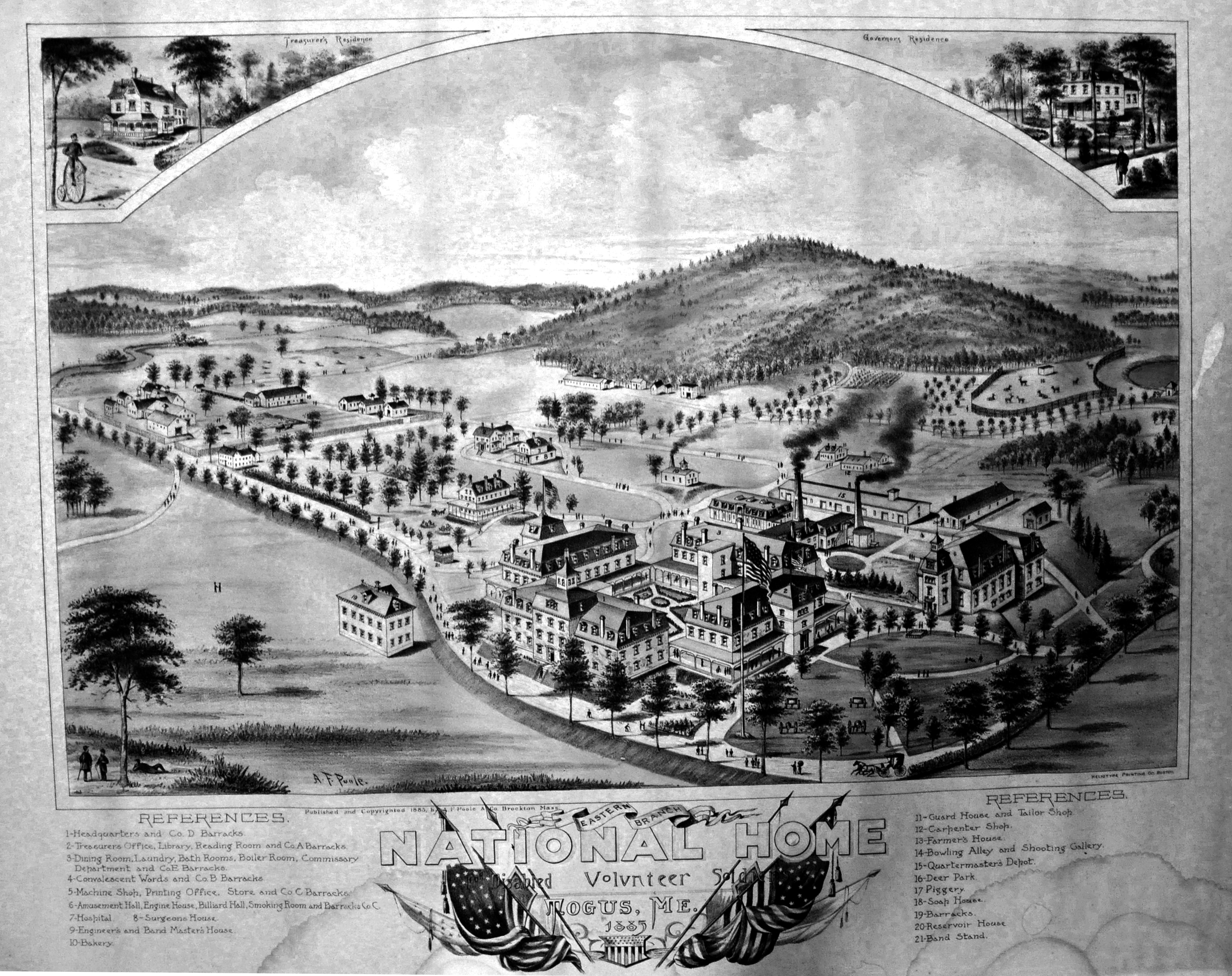
One such stallion was the horse called “Indian Chief” In a report to the Board of Agriculture (1867) about the agriculture of Kennebec County, Editor Boardman stated that Indian Chief was brought to Augusta from Canada about 1830. His stock were “great trotters” known for their endurance. He was described in 1848 as “a small gray horse” by one correspondent to the Farmer. Another stallion called “Quicksilver” was brought to East Winthrop about 1818 by James Pullen. Pullen’s son later recalled for the Farmer in 1872 that this stallion was sired by ”the imported Arabian horse, Dey of Algiers.” Quicksilver was a “silver gray” horse purchased from a gentleman named “Bellows” of Bellows Falls, Vermont. Quicksilver was broke only to saddle but was “a square trotting horse, never galloped” according to Pullen.
In the fall of 1820 the Maine State Agriculture Society held its first “Cattle Show and Fair” at Hallowell. First premium for “Stud Horse” went to Quicksilver. Alvin Hayward’s stallion, probably Winthrop Messenger, was awarded first premium for best draft animal. According to the authors of an “Illustrated History of Kennebec County Maine” (1892), there was for a time much rivalry between the Messenger and Quicksilver stock. Apparently, the Quicksilvers were better looking but could not match the “bottom” or endurance of the Messenger horses. There were several stallions imported to Kennebec County with strains of Morgan blood. Chief among them was a stallion called “Winthrop Morrill.” According to H. T. Helm in his book American Roadsters and Trotting Horses (1878), Winthrop Morrill was “one of the most successful stallions of the Morgan family, and the only one that can be claimed to be a real Morgan.” This horse was foaled in 1855 and passed through several hands before coming to Kennebec County in 1862. He was eventually placed in the stud at Winthrop for owners Charles G. Jackson and Joseph G. Rounds who named him. By the end of 1877 he was number five on the list of sires nationwide for producing horses trotting in 2.30 or better. See Noted Maine Horses, Vol. 2, (1887) by John W. Thompson.
Winthrop Morrill died on August 17, 1882, with eight credits on the 2.30 list. He died in the Winthrop stable of B.F. Fairbanks formerly occupied by Winthrop Messenger and was buried on the farm of George C. Goodale, one ofhis former owners. See John W. Thompson’s “The Maine Horse Breeder’s Monthly” (September, 1882). Mention should also be made of the so called “Eaton Horse.” With strains of Morgan and Messenger blood, this stallion came from Farmington to Winthrop in 1854. He was owned by William Beals or Beale of Winthrop, a neighbor of Editor Holmes. According to Holmes (1854), “Old Kennebec is bound to have the best horses, and by introducing the Eaton horse among those already on hand, their numbers will be much increased.” In 1857 the Eaton Horse was sold to a Society in Tennessee for use as a stock horse to help improve their breed.
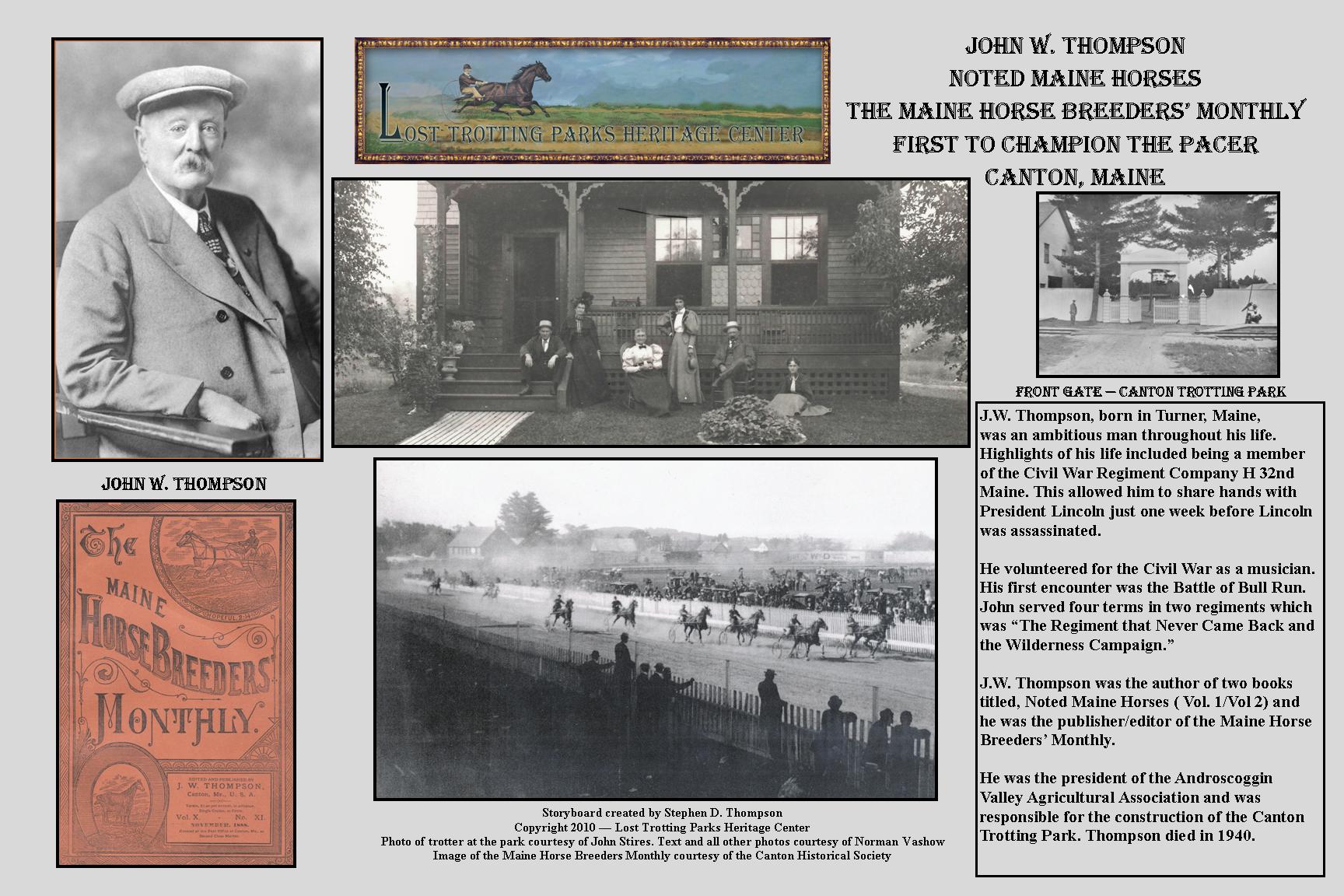
Another popular sire line in Kennebec County originated with the so-called “Drew Horse” of Penobscot County. Old Drew was foaled (1844) in Exeter and died (1866) in Levant. As noted by Boardman in his history of Kennebec County, George M. Robinson of Augusta was the most extensive breeder of Drew stock in the county. Robinson stood the Drew stallion Gen. McClellan at his stable near the Kennebec bridge. Later, he stood his son Gen. Grant. Other sons of Gen. McClellan were in the stud at Litchfield, China and Vassalboro. At about the time the Drew stock was coming into favor with Kennebec breeders, another resident was looking for a few good stock horses to cross with the Messenger and Drew mares around the State. In 1859 Thomas S. Lang, a Quaker from Vassalboro, began his search in Vermont. The young horse he found was Gen. Knox, a cross of Messenger and Morgan blood. At that time, Lang believed the young stallion had more crosses to the Morgan line than the Messenger. Later, upon further investigation by John Wallace and others, it turned out that this stallion was closm Alden Goldsmith, a noted breeder of Orange County, Ner bred to the Messenger blood. About the same time, Lang purchased a son ofRysdyk’s Hambletonian called “Gideon” froew York. Both stallions had a major impact on improving the trotting stock of Maine. Gen. Knox remained in the stud at North Vassalboro until 1871 when he was sold to Fashion Farm in New Jersey. His stallion book often exceeded 100 mares a season.

Like Old Messenger, his offspring were horses of “all work.” As one farmer wrote in the Farmer (1867), “Knox stock is the best from plow to gig that I ever saw.” Gen. Knox won many battles on the tracks of Maine and New England which only served to heighten his popularity with breeders. By 1887 there were over 50 of his sons being used for stallion duty throughout the State. See Thompson’s Noted Maine Horses, Vol. 2, (1887). Around 1865 a painting ofGen Knox was done by the noted animal painter Thomas H. Robinson. Unfortunately, the whereabouts ofthis painting is unknown. Unlike Gen. Knox, Gideon, a foal of 1860, was in the stud at North Vassalboro for only a short time. He was a muscular, gray horse that turned white with age. Somewhere there exists a beautiful oil painting of him by the noted artist Scott Leighton. It apparently does not exist in any public art collection in Maine. An illustration of the painting can be seen in Volume 2 of Noted Maine Horses, (1887).
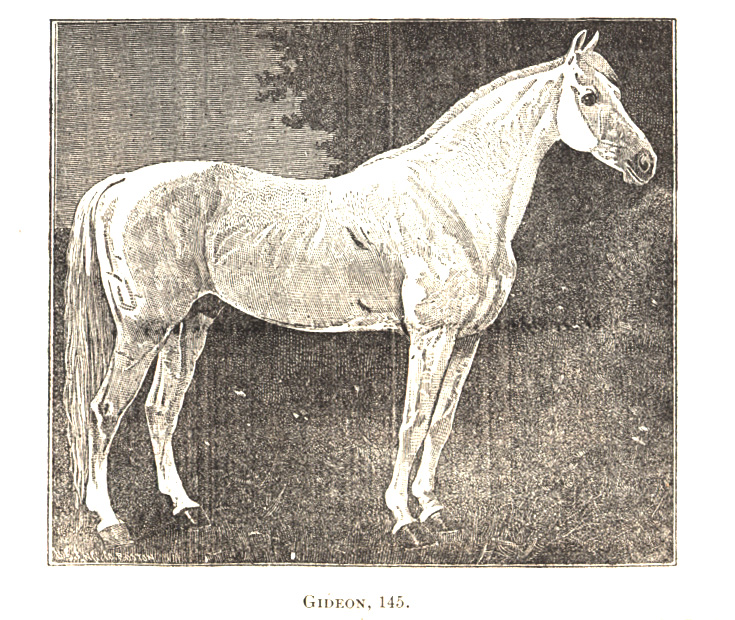
Gideon sired many good trotters and became an important broodmare sire. The famous mare Gretchen, the dam of the Champion Stallion Nelson, owned by C.H. Nelson of Waterville was sired by Gideon. Lang transferred Gideon to his trainer, Foster S. Palmer, around 1866 before he moved to Oregon. Gideon had a long and productive stand in Maine before passing in the fall of 1889 at the Benton farm of Charles H. Wood. In 1870 Thomas S. Lang wrote a detailed letter to the Farmer as there was much interest surrounding the background of Gen. Knox, Gideon and others. With regard to Gideon, his words were prophetic – “I consider (Gideon) one of the best descended horses ever brought to Maine since Old Messenger’s time.”
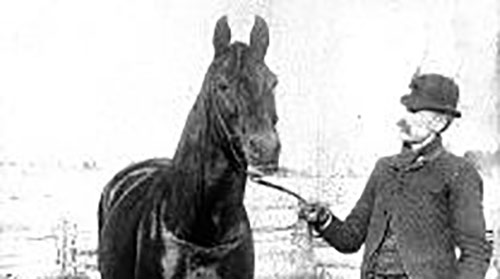
In summary, there were several factors that came together to make Kennebec County the “cradle of the trotter” for Maine. First, we must take our hat off to the enterprising farmers of the county like Hayward, Reed, Lang, Robinson, Tilton and others. As noted in Day’s history of Maine agriculture, “horsemen were one of the first groups in Maine to attempt an organization for the promotion of their own special interests when they askedthe Legislature in 1831 to incorporate the “Maine Association for the Improvement in Breed of Horses.” Most all of the incorporators were prominent citizens of Kennebec County. Second, we must recognize the quality of the stallions brought to the county by these breeders. Also, we should not under estimate the influence of the various agricultural societies that showcased the horse stock of the county. And lastly, the editors of the Maine Farmer rendered a valuable service to the horse industry by keeping breeders well informed and by taking an interest in all matters relating to the improvement of the trotting horse.

